
PLUS The ThreaT of SeiSmic Te STing a Sea change for chile our r adical Plan for e uroPe’ S f iSh Surfer maya gabeira on saving her workplace, the ocean B ig WaVe S
2013 | oceana.org
ting the World’s Oc eans
SPRING
Protec
Oceana is the largest international advocacy group working solely to protect the world’s oceans. Oceana wins policy victories for the oceans using science-based campaigns. Since 2001, we have protected over 1.2 million square miles of ocean and innumerable sea turtles, sharks, dolphins and other sea creatures. More than 500,000 members and e-activists support Oceana. g lobal in scope, Oceana has offices in North, South and Central America and Europe. To learn more, please visit www.oceana.org
Board of direcTorS
Dr. Kristian Parker, Chair
James Sandler, Vice Chair
Simon Sidamon-Eristoff, Secretary
Valarie Van Cleave, Treasurer
Keith Addis, President
Herbert M. Bedolfe III
Ted Danson
Sydney Davis
César gaviria
María Eugenia girón
Stephen P. McAllister
Michael Northrop
Dr. Daniel Pauly
Susan rockefeller
Heather Stevens roger van Vliet Sam Waterston
oceana
Chief Executive Officer Andrew Sharpless President
James Simon
Senior Vice President, North American Oceans & Chief Scientist
Michael Hirshfield, Ph.D.
Senior Vice President, European Oceans and Seas
Xavier Pastor
Vice President, South American Oceans & Antarctica
Alex Muñoz
Vice President, Belize Audrey Matura-Shepherd
Senior Vice President, Strategic Marketing & Communications
Matthew Littlejohn
Vice President, Global Development
Bettina Alonso
Deputy Vice President, U.S. Campaigns
Jackie Savitz
Deputy Vice President, Pacific Susan Murray
ocean council
Susan rockefeller, Chair
Julie Tauber McMahon, Vice Chair
Dr. Andrew Bevacqua
Carolyn Marks Blackwood
Keely and Pierce Brosnan
Deborah Buck Amy and gary Churgin
Barbara and Bertram Cohn Ann Colley
Dan and Beth Cort
Andrew and Sydney Davis
Michael Dershowitz
Barbara Ettinger and Sven Huseby Christina Falco and Michael Frumkin
Joanna and Brian Fisher Kelsey grammer
Loic gouzer
Julie Hill Carey Hotchkis Hardy Jones
J. Stephen and Angela Kilcullen robert and Arlene Kogod
Eve Kornyei
Slane Holland Lightburne
Cynthia Lufkin Willa and Ted Lutz
Dede McMahon
Tiffany Moller
Vanessa Noel Aaron Peirsol Nicole Polizois
Lois robbins
Anne Alexander rowley
Andrew Sabin Starr Scott
Jennifer Small and Adam Wolfensohn
Kelly T. Smith
Danielle Steakley
Sutton Stracke
Danielle Thomas Susan Trees
Toby Usnik
ediTorial STaff Editorial Manager
Emily Fisher
Assistant Editor
Pete Brannen Graphic Designer
Jenn Hueting
SP r IN g 2013 CONTENTS
6 a Sea of noise
Oceana’s campaign to prevent dangerous seismic testing from injuring thousands of whales and dolphins in the Atlantic.
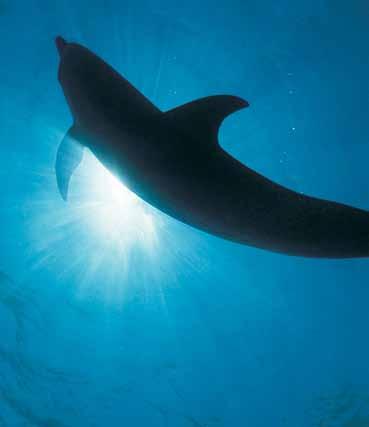
Oceana is published by Oceana Inc. For questions or comments about Oceana, or to subscribe to Oceana, please call Oceana’s membership department at +1.202.833.3900, e-mail membership@oceana.org or write Oceana, Member Services, 1350 Connecticut Ave. NW, 5th Floor, Washington, D.C. 20036, USA.
Oceana’s Privacy Policy Your right to privacy is important to Oceana, and we are committed to maintaining your trust. Personal information (such as name, address, phone number, e-mail) includes data that you may have provided to us when making a donation or taking action as a Wavemaker on behalf of the oceans. This personal information is stored in a secure location. For our full privacy policy, please visit Oceana.org/privacypolicy.
Please recycle.
Printed with Eco-Ink — low volatility vegetable oil-based ink on 25% post-consumer recycled, processed chlorine free paper produced using 100% wind power in a carbon neutral process.
6
A Sea of Noise
chile’s Sea change How Oceana helped pass sweeping new fisheries reform in Chile.
a new era Introducing Oceana’s ambitious plan to save Europe’s fish.
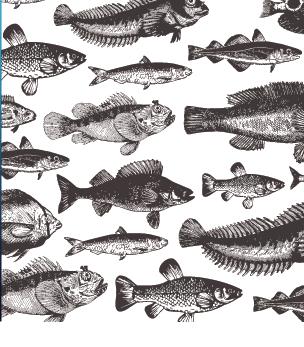
Oceana board member Dr. Daniel Pauly explains the importance of small-scale fisheries.
On the Cover Maya gabeira surfs in Hawaii.
Par T men TS
ceo’s note Oceana’s commitment to restoring abundant oceans is working.


making Waves
latest campaign victories from Oceana’s international team.
news & notes Shell’s mishaps in the Arctic, Oceana on 20/20 and more.
Q & a Surfer Maya gabeira on her deep connection to the oceans.

events An evening with Oceana’s board, a visit from Senator Sheldon Whitehouse and more.
Supporter Spotlight Loic Gouzer supports the oceans through his work at Christie’s.
chef’s corner Legendary seafood chef Eric r ipert presents a recipe for clams with spicy sausage.
Parting Shot A spotted sea slug off the coast of Chile near the Islotes Pajaros
f
d
eaT ure S
e
9
11
13 What are “small-scale fisheries?”
OCEANA.O rg
2
14
17
18
1
The
4
5
19
11 A New Era
© Brian Bielmann
9
Chile’s Sea Change
© Oceana | Eduardo Sorensen
give Today
Call us today at 1.877.7.OCEANA, visit www.oceana.org/give or use the envelope provided in this magazine to make a donation. Please contact us if you are interested in planned giving that could support Oceana’s work and also provide you with income and potential tax benefits. Oceana is a 501(c)(3) organization and contributions are tax deductible.
 Protecting the World’s Oc eans
Protecting the World’s Oc eans
Oceana’s accomplishments wouldn’t be possible without the support of its members. You can help Oceana campaign to restore our oceans with your financial contribution.
as a reader of this magazine, you understand that the oceans provide protein to people at a vast scale – marine fish are today equal to eggs in their share of humanity’s animal protein diet. You also are likely to be a snorkeler, surfer, beachgoer, sailor, diver or a recreational fisherman and to have some of your life’s happiest memories colored in sandy, salt-water surfside hues. You want to deliver an ocean filled with seals, salmon and sea bass to the future for reasons that are both practical and poetic. You want the ongoing ocean collapse to stop.
Oceana, with your support, is succeeding in restoring abundant oceans. “That sounds like good news,” you are thinking, “but just how do we know that we are winning for the oceans?”
Oceana was founded a little more than a decade ago by a group of very sophisticated foundations that knew the facts of ocean collapse. They were profoundly disappointed by policy-makers’ response and the sadly too often ineffective efforts of existing NGOs. So these philanthropists launched Oceana and gave us very hard-headed and practical instructions. Deliver measurable improvements in ocean health, and do it quickly. They declared that Oceana would not, like many NGOs, conduct “programs” but would instead run campaigns with specific and concrete goals and short deadlines. Our success, or failure, would be measurable and we would be accountable for results.
That business-like model means that goal setting is fundamental to how we operate, and each year we recommend detailed goals for approval to our board, and report, in detail, on progress (or lack thereof) on every one of our existing goals.
Our goals this year are a cause for great optimism. Building on a decade of policy campaigning in Europe together with our allies in government and other NGOs, we have committed to delivering a 40% increase in the abundance of European ocean fisheries by the year 2020. We are, in short, committing to assuring that before the decade is over, there will be a lot more fish in the water.
Europe’s famously depleted ocean fisheries can be rebuilt because policies stopping overfishing have
finally been adopted by the European Union. Fishing quotas will be set to allow spawning stocks to rebuild. Nursery habitat will be protected from bottom trawling. Bycatch and at-sea discards will be curtailed.
This is a victory not just for Oceana, but for all the scientists, policy-makers and NGOs that have fought to stop the short-sighted practices of the industrial scale commercial fishing fleets of Europe. It is also a victory for the rest of the world, because we believe Europe is showing, on a very large scale, that ocean fishery recovery is achievable.
Already, the share of European ocean catch whose quotas are within sensible scientific limits is up to 50% from less than 10% a decade ago.
Everywhere Oceana works – Europe, USA, Chile and Belize – Oceana is succeeding in restoring abundant oceans. We know this because we set ourselves the goal of winning scientific quotas, protecting habitat and reducing bycatch. Soon, we will be able to follow Europe’s lead and measure our progress by seeing more fish in the ocean – measurable increases in ocean abundance.
If you like eating fish, and if you want to make sure that a planet soon to have 9 billion people can feed everyone, this is very good news. Think how it will feel to go to the beach, and know that the watery 71 percent of the planet by which you stand is abundant and healthy. That will be good for the creatures of the sea. And it will be very good for us creatures of the land.
Thank you for your generous support of Oceana. I hope you will help us again this year.
For the Oceans,
Andy Sharpless CEO

Oceana is grateful for the grants, contributions, and support it has received from dozens of foundations and companies and thousands of individuals.
Oceana wishes to thank all of its supporters, especially its founding funders as well as foundations that in 2012 awarded Oceana grants of $500,000 or more:
Adessium Foundation, Arcadia Fund, Oak Foundation, Robertson Foundation, Rockefeller Brothers Fund, Sandler Foundation of the Jewish Community Endowment Fund, and VELUX Foundations.
OCEANA.O rg | 1
ceo’S noTe
How do we know that we are winning for the oceans?
Everywhere Oceana works – Europe, USA, Chile and Belize – Oceana is succeeding in restoring abundant oceans. We know this because we set ourselves the goal of winning scientific quotas, protecting habitat and reducing bycatch.
o ffshore drilling leases expire in Belize
The azure waters off of Belize are slowly slipping out of the hands of the oil and gas industry as most of the leases for oil drilling in the country’s waters have expired and reverted to government control.
Before Oceana arrived in 2009, almost all of the country’s ocean—7,465 of 8,648 square miles or 86 percent of its ocean— had been leased to oil companies to explore the possibility of offshore drilling. This leased area included such hallowed spots as the Blue Hole, a massive underwater sinkhole made famous by the dives of Jacques Cousteau.
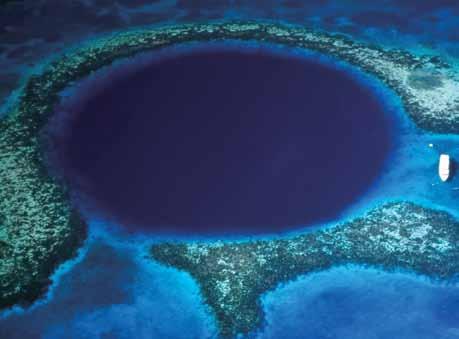
Fast forward to 2012 and only 2,343 square miles or 27 percent of Belize’s ocean is still claimed by oil companies. That is because many leases have expired and not been re-issued by the Belizean government, thanks to increasing pressure by Oceana and other organizations in the region. After
continued public calls by Oceana to remove oil concessions off the Blue Hole, the government made the bold move to call on Princess Petroleum Company to voluntarily give up their rights to drill on the Blue Hole, recognizing that the country’s natural heritage is worth far more than the fossil fuels it sits on. Oceana is pushing for a full ban of oil drilling in the waters off of Belize, a proposal with almost unanimous popular support in the tropical nation.
Victories for n ew e ngland fish
Oceana won two major victories for fish in New England in January. The first is a legal settlement that establishes, for the first time, strict monitoring of bycatch in the Northeast groundfish fishery.
As a result of the settlement, the New England groundfish fishery, which catches Atlantic cod, haddock and flounder, among others, must strictly account for how much fish it’s catching and discarding.
ICCAT preserves catch limits for bluefin tuna
Thanks to pressure from Oceana and other organizations, the International Commission for the Conservation of Atlantic Tunas (ICCAT) agreed to keep its catch limits for 2013 for Atlantic and Mediterranean bluefin tuna largely the same as 2012, even as stocks of this beleaguered fish show signs of improving. ICCAT is an international body responsible for managing populations of tuna and other highly migratory species, like sharks, that cross international boundaries over the course of their life cycle.
The commission has come under fire in recent years for ignoring scientific recommendations and setting fishing quotas outside of sustainable levels. The agreement, therefore, was a welcome development for bluefin, which has seen the biomass of its Eastern Atlantic and Mediterranean populations dramatically reduced in the past two decades. For this stock ICCAT passed only a modest increase in catch limits. For the Western population of Atlantic bluefin tuna which has been reduced by more than 82 percent, ICCAT voted to freeze catch limits at their 2012 levels.
Secondly, the New England Fisheries Management Council approved a new set of significantly reduced annual catch limits for two stocks of Atlantic cod in the Gulf of Maine and Georges Bank. While all stocks of Atlantic cod have been overfished to alarming levels, the cod populations in these two areas have dropped to dire levels. The Gulf of Maine cod population is currently at less than 19 percent of its target level, while the Georges Bank cod population is at 7 percent. The new limits will reduce catches in the Gulf of Maine and Georges Bank by 77 percent and 55 percent, respectively, in a last-ditch effort to save these populations.
Oceana has been campaigning for years to establish science-based monitoring of this historically overfished region of the U.S.
2 | SP r IN g 2013
making WaVe S
© Tony Rath
Aerial view of the Blue Hole
eu passes historic overhaul of fishing policy
Tax credit for offshore wind renewed
I
n February the European Parliament overwhelmingly voted in favor of a comprehensive reform of the Common Fisheries Policy (CFP), a law that manages all European fisheries. The reform includes amendments that require member states to fish all stocks at sustainable levels by 2015 and puts an end to the practice of discards, throwing dead unwanted fish back into the sea.
The CFP has an enormous impact on the world’s oceans. The European fleet comprises tens of thousands of boats that catch almost 4.5 percent of the
total fish by weight worldwide, making the EU the fifth biggest fishing power in the world. The last CFP was adopted in 2002 but has failed to put a stop to the overexploitation of European fishing grounds. Oceana has been working for over 20 months to make sure that this once in a decade opportunity to reform the failed EU fisheries policy was not wasted.
The EU Parliament will negotiate with the Council of Fisheries ministers to reach a final agreement on the details of the reform by June.
As the U.S. veered ever closer to the so-called “fiscal cliff,” the future of the nation’s offshore wind industry hung in the balance. A financing tool crucial to luring investment to the industry, known as the Investment Tax Credit (ITC), was set to expire on December 31, 2012 unless Congress acted to renew it.
Sea trout fishing banned
in the Baltic Sea’s g ulf of f inland
Last summer, alarming surveys from the Finnish Baltic Sea found that wild sea trout had become critically endangered in the Gulf of Finland. Until recently, there were no limits to how much wild sea trout could be caught, despite a steady decline in recent decades and evidence that populations in Finland and Russia were well below historic levels.
That changed after the regional authorities of Uusimaa and the
Southeast Finland Centres for Economic Development, Transport and the Environment banned all wild sea trout fisheries in the Gulf of Finland to give the stock a chance to rebuild. The ban, which was a direct result of Oceana’s campaign work, excludes coastal waters, including critical river estuaries, and Oceana is working to ban fisheries in those areas as well.
While the credit technically lapsed momentarily, after extensive campaigning by Oceana and other groups, Congress decided to renew the ITC as part of the fiscal deal reached in the New Year. Had the ITC not been renewed, it would have dealt a severe blow to an industry that, though well-established elsewhere, is just getting established in the U.S.
eu bans shark finning
After years of campaigning by Oceana and its allies, “fins-attached” is the law of the land in the EU, after the European Parliament voted for a strict ban on shark finning for all vessels in EU waters, as well as for all EU vessels around the world.
While a ban on shark finning has technically been in place in the EU since 2003, the new measure closes several major loopholes by requiring that all sharks are landed with their fins attached.
This policy introduces a strict ban on the practice of finning, in which sharks are taken out of the water, their fins are cut off, and the rest of the shark is thrown back to the water, sometimes still alive.
The EU is the world’s largest exporter of shark fins to Hong Kong and mainland China, and the world’s top shark fishing power. Oceana has previously campaigned successfully for bans on shark finning in the United States and Chile.
the domestic offshore wind industry could create
An economic analysis prepared for the Department of Energy found that by bring in over
in annual investments and create
of clean power, enough to power the entire United States
OCEANA.O rg | 3
making WaVe S
Oceana, the Center for Biological Diversity and Turtle Island Restoration Network filed a lawsuit against the National Marine Fisheries Service and U.S. Fish and Wildlife Service for the agencies’ failure to protect critical habitat areas for threatened and endangered loggerhead sea turtles on their nesting beaches and in Atlantic and Pacific waters. These turtles face threats from fisheries, climate change and coastal development.
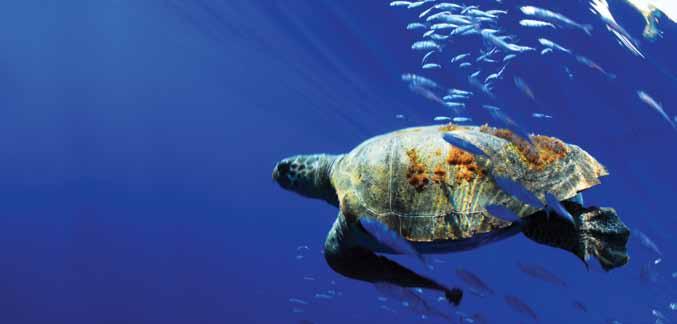
Shell Oil’s drill rig the Kulluk ran aground near kodiak, alaska on New Year’s Eve, and was pulled from shore nearly a week later to a place of safer refuge for evaluation. This latest accident follows a drilling season full of problems and near disasters.
Oceana’s senior vice president for North America and chief scientist, Mike Hirshfield, sat down with aB c’s 20/20 to discuss the widespread problem of seafood fraud.
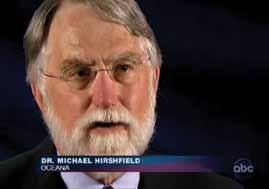
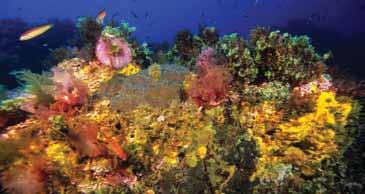
The percentage of sea food Oceana found to be mislabeled in the New York Cityarea in a recent report. DNA testing of seafood samples from 81 retail outlets, including grocery stores, restaurants and sushi venues, confirmed that 56 samples were mislabeled according to FDA guidelines.
The Oceana Ranger expedition explored a series of underwater mountains off the west coast of Portugal known as the Gorringe bank. The crew documented hundreds of species as well as litter and abandoned fishing gear.
1 TiTle neWS & noTe S
4 | SP r IN g 2013
2 4 3 5
© OCEANA | Juan Cuetos
© OCEANA | Juan Carlos Calvin
maya gaB eira
Growing up in Rio de Janeiro, Brazil, 25-year-old surfing phenom Maya Gabeira spent plenty of time on the beach. But working on her suntan grew tiresome, so she decided to try surfing as a teenager. It didn’t take long for Gabeira to get hooked, and when she moved to Hawaii at the age of 17, she first encountered the giant waves that she’s become so well-known for conquering. Gabeira, who is now regarded as one of the best female big wave surfers in the world, currently lives on the North Shore of Oahu, Hawaii, and spends around five hours a day in the water. Although her father, politician Fernando Gabeira, is a founding member of Brazil’s Green Party, she hasn’t dived into politics just yet. But she is a natural ocean conservationist, and she filmed a public service announcement for Oceana. We caught up with her in between waves.
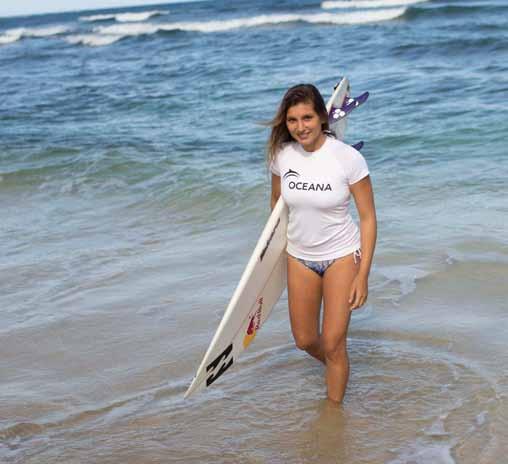
can you describe the feeling of surfing a big wave?
Riding a big wave is a very unique sensation. When you do catch that big wave and you conquer it, it’s quite an amazing feeling. And I get to take in every second of that experience. And it empowers me because I went along with such a powerful force without fighting it and I am able to benefit from that.
describe your connection to the ocean. To be very honest when I was fourteen and I started surfing, it was a very scary place to me and a very uncontrolled environment that I knew very little of. I’ve spent a lot of time in the ocean since then, so I feel much more comfortable nowadays. And it definitely has become one of the places I go to when I just need to clear my mind. It always refreshes me.
Why do you care about protecting the ocean?
There are so many reasons why I really care about everything that Oceana is doing and everything that is done to protect the oceans. First of all, the ocean is where I work and it’s basically where I live. I get to experience the ocean when it’s the most powerful, when the waves are giant, after big storms have hit the coast and we jump in the water and we get to surf it. And that’s incredible, but we have
to realize that it’s fragile too, because we’re destroying it. All of us have to get together and protect it because, even though it looks really strong and it is at times, it’s not going to save itself.
any especially memorable moments on the water?
I was in Cape Town, surfing a place called Dungeons, where I surfed my biggest wave ever: recorded at 45 feet. It was one of the days that everything could have gone wrong, because I started the day off with my tow partner almost drowning and I ended up being able to rescue him. He was really out of breath and he was looking really damaged for the day. And somehow he recovered, and I decided to go back out there after maybe three or four hours of feeling really defeated by the ocean. But this time around we put ourselves together as a team and we decided that I should go and try again and that’s when I got the biggest wave of my life.
OCEANA.O rg | 5 Q & a
“The ocean i S Where i Work and iT’S BaS ically Where i liVe.”
Maya Gabeira on the north shore of Hawaii
© Brian Bielmann
A SEA OF
 By e mily f i S her
By e mily f i S her
The sound of ocean waves ebbing and flowing is one of the most soothing on Earth, with a rhythm akin to a human’s breathing
the noise disrupts vital behaviors such as mating and feeding, and at closer ranges airgun blasts can cause temporary and permanent hearing loss, which leads to beach strandings and death.
Sonar blasts from military exercises and ever-present noise from commercial shipping engines are creating a cacophony in our seas – and if proposed seismic airgun testing moves forward in the Atlantic, the noise will soon become unbearable for some of the most beloved and charismatic creatures in the ocean.
During seismic airgun testing, deafening blasts of compressed air are shot from the surface of the sea miles under the seafloor to detect oil and gas deposits. The Department of the Interior is considering airgun testing from Delaware to Florida, which could have devastating impacts on marine mammals, sea turtles and fisheries.
If approved, the airgun blasts, which are 100,000 times more intense than a jet engine, would occur every 10 seconds, 24 hours a day, for days to weeks on end. The government’s own scientists have estimated that seismic airguns would harm 138,500 dolphins and whales, injure critically endangered North Atlantic right whales and disrupt sea turtle nesting for threatened loggerheads.
The ear-splitting blasts are especially damaging to marine mammals, for which deafness means almost certain death. Whales, dolphins and other marine mammals use high-pitched sound waves to find food and communicate with members of their pods. The blasts mask the communication of whales and dolphins and can make them abandon their habitat. The consistency of
“A deaf whale is a dead whale. They need their hearing to survive,” said Matthew Huelsenbeck, a marine scientist at Oceana. “The amount of marine life harmed by airguns is simply unacceptable.”
So why are sound waves in the ocean so damaging to marine life? Because of the way sound waves move through sea water. Unlike sunlight, which can’t go farther than a few hundred feet in the ocean, sound waves can travel for hundreds of miles.
In addition to damaging whales and dolphins, the government predicts that the blasts would drive fish away from important feeding or fishing grounds, putting commercial and recreational fishing industries, which support more than 200,000 jobs and generate $11.8 billion in revenue, at risk. According to a study conducted in the Arctic Ocean, fisheries for cod and haddock
J eT engine
(250 dB in water)
Sei S mic te Sting is 190 decibels (dB), which equates to 250 dB in water. This sound is 100,000 times more intense than a jet engine. Since the dB scale is logarithmic and not linear, a 20-dB sound is 10 times louder than a 10-dB sound, and a 30-dB sound is 100 times louder than a 10-dB sound.
OCEANA.O rg | 7
moTorcycle
at rest. But beneath the waves, a dangerous din is growing.
S ei S mic airgun Te STing
rock concerT
Talking
138,500
Injuries that seismic testing poses on wildlife:
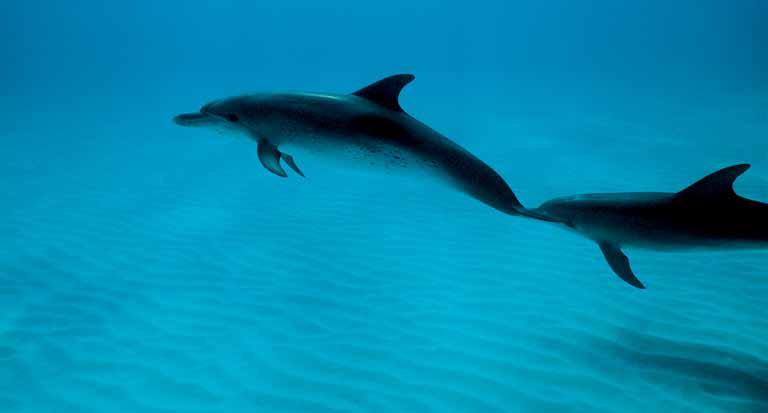
abandonment of habitat
showed decreased catch rates of 40 to 80 percent surrounding the use of a single airgun array. Around the world fishermen have received compensation after seismic companies have scared away their fish and decreased their catches.
What makes proposed seismic airgun testing even more absurd is that oil drilling on the Atlantic coast is banned until at least 2017, so the use of seismic airguns is not only damaging in the short-term, it’s premature at best and catastrophic at worst, in the case of an oil spill in the long run.
“We should be focusing instead on offshore wind development, which would provide more jobs and energy than offshore drilling without the risks to the environment from seismic airguns, oil spills and carbon emissions,” said Huelsenbeck.
O CEANA’ S C AMPAIGN
Oceana’s campaign to stop seismic airgun testing has included “noisemaking” protests in cities on the East Coast, including one across from the Department of the Interior building in Washington, D.C. Oceana also submitted 30,000 petitions and lobbied
House and Senate members to send a letter to the President opposing seismic testing in the Atlantic.
After nine months of campaigning by Oceana, the Department of the Interior decided to delay their final decision on whether Atlantic seismic testing will be allowed. This final decision was originally scheduled for December 2012, but due to strong opposition it has been pushed back to late 2013 at the earliest.
The Atlantic isn’t the only ocean in the crosshairs. Conservationists scored a victory in November when the California Coastal Commission rejected a proposal by Pacific Gas and Electric to conduct seismic airgun testing in the ocean surrounding the Diablo Canyon Power Plant near Morro Bay, CA, citing the unacceptable harm to marine life. The proposal faced massive opposition from a wide coalition, including Oceana and commercial and recreational fishermen.
Oceana will continue to push back against seismic testing in the Atlantic in order to keep whales and dolphins safe, and to steer clear of offshore drilling.
8 | SP r IN g 2013
disruption of mating and feeding Beach stranding and death Temporary and permanent hearing loss
D OLPHINS AND WHALES WILL BE INJURED
Two Atlantic Spotted Dolphins
BY P ETER B RANNEN
In just one year, everything has changed about how Chile catches fish.
A year ago the fishing industry could write its own rules, exploiting once abundant fisheries to near ruin while destroying unseen wonders with destructive fishing gear unchecked.


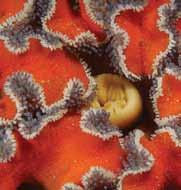
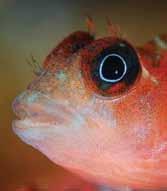
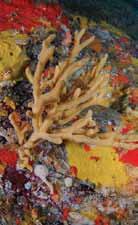
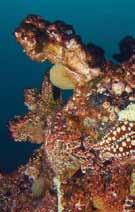
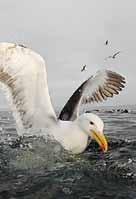
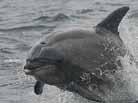
Now, after years of campaign work by Oceana and a historic vote by the Chilean Congress at the end of 2012, the seventh largest fishing power in the world will adopt one of the most forward-thinking, scientific fishing management plans ever proposed.
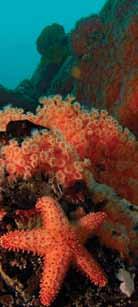
Chile’s slender physique, cramped by the Andes on one side and the Pacific on the other, is instantly recognizable on a map. But its geography also includes a constellation of volcanic islands off its shores, from the mythic Easter Island, with its iconic, inscrutable statues, to the Juan Fernandez Islands, where the 18th century exploits of a Scottish shipwreck survivor would inspire Daniel Defoe’s Robinson Crusoe. Less well known, and perhaps even more remote, are the Desventuradas and the moonscape of Salas y Gomez, a barren spit of land 250 miles east of Easter Island. But these islands are only
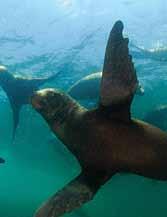
All photos on this page by © Oceana | Eduardo Sorensen
eamoun TS W ill B e
clo S ed T o T raW ling a S a P recau T ion. iT ’ S an area e Q ual T o more T han 57,915 SQ uare mile S .
the visible, surface-breaching tops of a mountain range of underwater peaks known as seamounts.
Due to their inaccessibility, seamounts garner little attention in the wider world, certainly nothing on par with the media coverage afforded to coral reefs or rainforests. But in terms of biodiversity they are nearly unmatched. Until now most of Chile’s seamounts were unprotected, and many, such as those around Juan Fernandez, were subject to bottom trawling, a practice in which enormous nets kept open by doors each weighing several tons ravage the seafloor. Before they could even be studied, centuriesold coral gardens supporting a rainbow of marine life, from Galapagos sharks to butterfly fish, were obliterated in moments.
Now, all 118 of Chile’s seamounts will be closed to trawling as a precaution. It’s an area equal to more than 57,915 square miles.
Vice President of Oceana for South America, Alex Munoz, has been at the forefront of the push for the new universal protections for seamounts, which have no precedent anywhere else in the world.
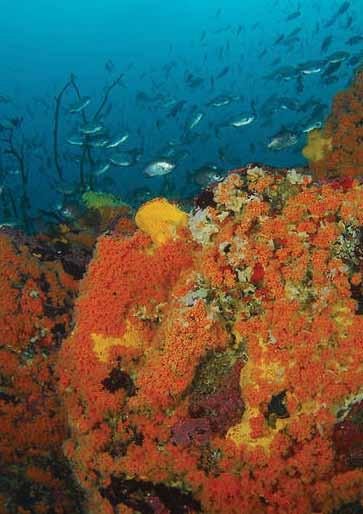
“The country has adopted a precautionary approach where first we presume that the seamounts are valuable. This is the most important restriction to bottom trawling that has ever been passed in Chile,” he said.
But the new law does not stop at protecting seamounts. On-board scientific
observers will be required on all Chilean trawlers to identify other vulnerable marine ecosystems. Those observers have the authority to stop a trawler from fishing in an area and order it to move on until the area can be studied in full if it seems ecologically significant.
If protection to vulnerable marine habitats were all that was accomplished by the new fisheries law it would have been a landmark achievement. But the new fisheries law also overhauls how Chile decides how much fish it catches, putting scientific concerns above industry ones, and putting an end to overfishing in what had been essentially a lawless commons in the Pacific.
“We’ve moved from a time when fisheries management was up to the discretion of the fishing industry to one in which the country has embraced a science-based approach,” says Muñoz.
A report prepared by Oceana and delivered to Chilean lawmakers outlined the scope of the problem that Chilean fisheries faced. Three of Chile’s major fisheries, anchovy, hake and jack mackerel, had seen a 95 percent drop in abundance in only 15 years and were being fished at levels that far exceeded scientific recommendations. For hake the situation was particularly dire: in the past decade it had been caught at levels 193 percent higher than was biologically safe.
Now, as a result of Oceana’s report and subsequent advocacy, catch limits will be determined according to the best
science available. Fishing fleets will also be required to dramatically curtail the incidental capture and discarding of unwanted species, known as bycatch. Certain species, such as sea birds, marine mammals or turtles that are tangled up and injured in industry gear, will be required to be brought to on-land rehabilitation centers. This is a major development in a country where some fisheries have shocking amounts of bycatch. Chile’s swordfish fishery, for example, catches more sharks as bycatch than swordfish.
While the fishing industry fought the new law, it could end up working in their favor in the long run. As catches are brought back to within safe biological limits and stocks are given a chance to recover, the abundant schools of fish that once patrolled the coast could soon return. If the new fisheries law is implemented successfully, Chilean lawmakers foresee an end to the long decline of Chile’s most important fisheries sometime in 2015, at which point the stocks will begin to rebound.
Oceana played a central role in winning this remarkable victory for Chile’s oceans. “In only a few years of campaigning we’ve changed the face of the fishing legislation. We should all be proud of this,” says Munoz.
10 | SP r IN g 2013
n o W, all 118 of c hile’ S S
© Oceana | Eduardo Sorensen
Punta de Choros, Chile
BY P ETER B RANNEN
Conservation can sometimes seem like a vague, if noble, venture. When, for instance, is a place truly saved, or an ecosystem fully restored?
But what if there were a way to measure the progress of a conservation campaign—to match good intentions with hard data? And what if you could not only protect the environment from further harm but bring it back to a state of relative abundance.
That is exactly what Oceana is aiming to do in Europe over the next seven years. By 2020 the organization hopes to increase the catches of European fisheries by 40 percent. It’s called a biological outcome goal. It’s a new approach and it’s an ambitious one.

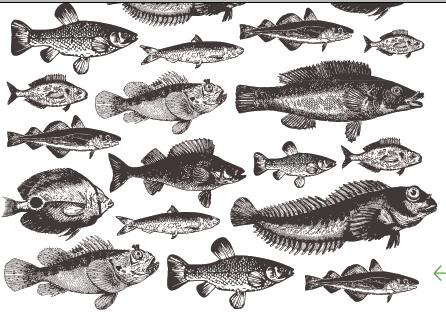
OCEANA.O rg | 11
“It’s an opportunity to radically change the face of the European Fisheries and to show that another management model
How Oceana’s ambitious plan for European fisheries could drastically increase the amount of protein in one of the most historically overfished places on Earth.
FOR FISHING
is possible,” said Executive Director of Oceana in Europe, Xavier Pastor, who is leading the effort.
Already Oceana has seen its work in the Europe—historically one of the most overfished, mismanaged regions in the world— pay off. Since it started working in the region ten years ago, the number of Atlantic overfished stocks have been cut in half while the number of stocks that are now fished at scientifically-validated sustainable catch limits, known as maximum sustainable yields (MSY), has increased exponentially.
Once ailing stocks, like Spanish anchovy, are experiencing a rebirth as science-based quotas become more widely adopted. Marine protected areas have grown by 38 percent since 2010 and formerly intransigent actors like the International Commission for the Conservation of Atlantic Tunas (ICCAT) have shown encouraging signs recently that they are ready to protect the Bluefin tuna and swordfish stocks they manage.
“We are already starting to see the results, so it’s not just something that’s hypothetical or a wish list,” says Pastor.
The approach is also based on hard science. While increasing fisheries by 40 percent in the course of a few years might sound incredible to some, it’s exactly the sort of increase projected by a study published this fall in the journal Science. Though it might seem counterintuitive
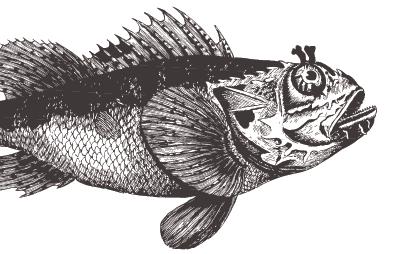
that catching fewer fish could eventually result in more for everyone to eat, in Status and Solutions for the World’s Unassessed Fisheries researchers from the University of California, Santa Barbara and the University of Washington, Seattle, describe how, by instituting measures like protecting critical habitat from destructive fishing methods like bottom trawling and by setting science-based quotas, fish stocks worldwide could see dramatic increases.
Oceana got a running start on these goals when, in a stunning move in February, the European Parliament voted to overhaul the management of its fisheries policy, known as the Common Fisheries Policy. If passed into law, the reform will secure changes in the three key areas that Oceana has been campaigning for: science-based fishing quotas, bycatch reduction and key habitat protection. The new CFP will ensure that fish stocks are caught at sustainable levels (MSY) by 2015. It will also, remarkably, put an end to the wasteful practice of discards, put Europe on a path to low-impact fishing, and set up a network of fish stock recovery areas. The EU Parliament will negotiate with the Council of Fisheries ministers to reach a final agreement on the details of the reform by June.
“Once fish stocks start to recover above MSY levels resource abundance will result in healthier fish stocks, greater and more stable fishing opportunities and better revenues for fishers,” Pastor says.
He predicts a domino effect of better management once fishermen see for themselves the advantages of the new conservation-based approach, when fish is unloaded in European ports in quantities not seen in generations.
But getting to a 40 percent increase won’t be
easy. Already, the new science-based, conservation-minded approach has run into stiff industry resistance.
“This transition phase requires strong political will and represents the biggest challenge in how best to reduce fishing pressure while minimizing impacts on the fishing sector,” says Pastor. “Weak, populist politicians and fisheries managers are the worst enemies of recovering fish stocks.”
Unlike many conservation campaigns, if it’s successful it will be obvious: every year more fish will be landed at ports around the continent, more plates will be served and more fish will be in the ocean. And if it’s successful it could herald the arrival of a new era for fisheries.
“If we can do this in Europe though, we can do it anywhere.”
By 2020, Oceana hopes to increase the catches of European fisheries by 40 percent. It’s called a b I olog I cal outcome goal. It’s a new approach and it’s an ambitious one.
What are ‘small-scale fisheries’?
“Nomen es omen,” said the Romans (who, interestingly, were all good Latinists) or “Your name is your fate.” So it is with “smallscale fisheries,” which are widely seen as traditional, slightly exotic activities maintaining fishing lore and postcard harbors, but which no longer supply the seafood that people eat worldwide, this being the job of large scale industrial, or “commercial” fisheries.
But this is all wrong.
Small-scale fisheries consist of three components:
Subsistence fishing, i.e., fishing for one’s own consumption (plus family and friends), with no commercial transaction involved

recreational fishing, which, as for subsistence fisheries, involves no commercial transaction, but whose main purpose is recreation, not obtaining food. Where ‘catch and release’ pro grams are involved, a fraction of the released fish survive, the other are so stressed that they later die and/or are taken by a predator, even if it looked viable when released; and
artisanal fishing (often called ‘petit métiers’ in Western Europe), which use small inshore vessels and/or fixed gear (e.g., coastal traps) and whose purpose is to catch fish and other organisms for sale. (For this reason, “commercial fishery” is an inappropriate term for indus trial fishing, as artisanal fishers also engage in “commercial” transactions).
Presently, the only database of global fisheries statistics in the world was created and is maintained by the Food and Agricultural Organization of the United Nations (FAO), based on annual submissions by its member countries. It is from this source that most statements on the world catch trends and their composition originate, e.g., in FAO’s 2012 State of the World’s Aquaculture
and Aquaculture (SOFIA), which reports that “the declining global marine catch over the last few years together with the increased percentage of overexploited fish stocks and the decreased pro portion of non-fully exploited species around the world convey the strong message that the state of world marine fisheries is worsen ing and has had a negative impact on fishery production.”
However, the government agencies of FAO member countries which send in catch statistics, for example, NOAA in the United States, do not usually have small-scale fisheries in their mandates. This means that the catch statistics they send to FAO do not include small-scale fisheries catches, which are then omitted from all reports based on FAO data, then justifying, that one doesn’t need to look at small-scale fisheries.
This vicious circle, resulting in the exclusion of small-scale fisher ies from the FAO database, is the main reason why they are not mentioned in international debates about food security. This is similar to ignoring the huge catch that is discarded annually by industrial fisheries, e.g., for shrimp, where for one pound of shrimp, 8-9 pounds of mostly perfectly edible fish are caught and immediately discarded.
The result is an underestimation by the FAO database of fisheries statistics of the world catch and with the contribution of smallscale fisheries (and particularly artisanal fisheries) underestimated to a tremendous extent.
The Sea Around Us project is presently completing ‘reconstruc tions’ of the historic catches since 1950 taken from the 200-mile Exclusive Economic Zone of all maritime countries and territories of the world. Thus, for the U.S. flag-associated islands in the Pacific, i.e., Guam, the Northern Marianas, and American Samoa, the reconstructed (or ‘actual’) catches were about 2.5 times larger than the official catches, and it was mainly the small-scale reef fisheries that were underestimated1.

Overall, this will allow us to assess the true contribution of smallscale fisheries to the world catch, and hence to our food security. Watch this space for the key results of our study, of which I can already announce one: small-scale fisheries are not small!
¹ Zeller, D., S. Booth, G. Davis and D. Pauly. 2007. Re-estimation of small-scale for U.S. flag-associated islands in the western Pacific: the last 50 years. U.S. Fisheries Bulletin 105: 266-277.
OCEANA.O rg | 13
Daniel Pauly is a Professor of Fisheries at the Fisheriesa Centre of the University of British Columbia, the Principal Investigator of the Sea Around Us Project, and a member of the Board of Oceana.
3 1
An Evening with Oceana’s Board of Directors


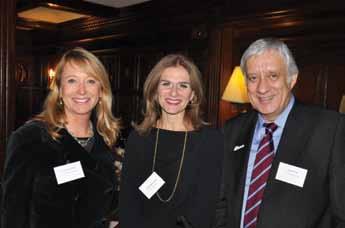
In December, Oceana’s board members, staff and funders gathered in Washington, DC for the third and final board meeting of 2012. During the meeting, local supporter Gloria Hidalgo hosted a reception at the George Town Club to celebrate a year filled with important victories for the oceans. Gloria was joined by co-hosts Simon Sidamon-Eristoff and Dr. Kristian Parker, the secretary and chair of Oceana’s board of directors. Oceana CEO Andy Sharpless addressed the crowd of revelers and shared some of Oceana’s campaign plans for the year ahead. During his speech, Andy took a moment to lead a round of applause in appreciation of longtime supporter Sir Thomas R. Moore, who had recently pledged another generous gift in support of Oceana.
A Visit with U.S. Senator Sheldon Whitehouse
Oceana was honored to welcome Senator Sheldon Whitehouse (D-RI) to its headquarters during the December board meeting. Senator Whitehouse addressed Oceana’s board and executive staff and thanked them for their hard work and commitment to protecting the oceans. The Senator provided an update on his work to address climate change and ocean acidification. He also shared his belief that the Investment Tax Credit -- a financing tool crucial to the future of renewable energy in the United States -- would be passed by Congress before the end of the year. Fortunately, as we learned on December 31, 2012, the Senator was correct. For more on this victory, please see the “Making Waves” section of this magazine.
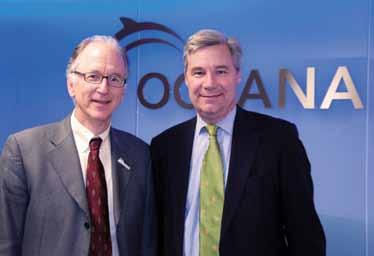
14 | SP r IN g 2013
TiTle eVenTS
Clockwise: Andy Sharpless, Sir Thomas Moore and Jessica Champness, Oceana Manager of Major Gifts; Oceana board members Valarie Van Cleave and María Eugenia Girón and Oceana Senior Vice President Xavier Pastor; Conn Nugent and Craig Laub
Andy Sharpless and Senator Sheldon Whitehouse (D-RI)
Breakfast at Christie’s
On October 24th over 40 guests gathered at Christie’s in New York City for breakfast and an engaging conversation about the “Five Things You Need to Know About the Oceans,” led by Oceana CEO Andy Sharpless. The event was hosted by Board Member and Ocean Council Chair Susan Rockefeller and Ocean Council member and Senior Vice President of International Communications at Christie’s, Toby Usnik. During the event, guests enjoyed learning about Oceana’s new initiative, “Save the Oceans: Feed the World.”
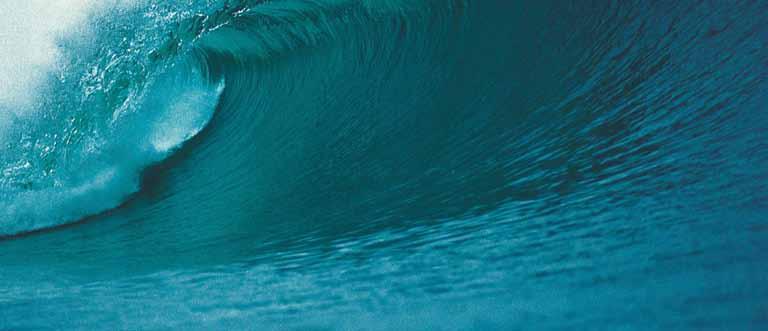
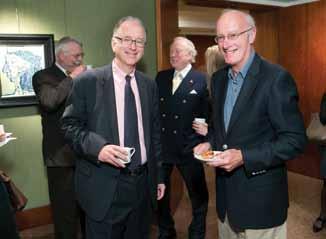
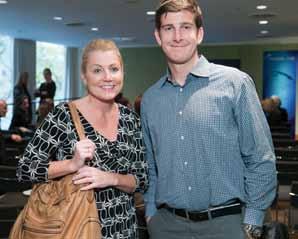

OCEANA.O rg | 15
eVenTS
oceana i S PleaS ed To announce the inaugural Oceana Ball for more information, please visit www.theoceanaball.com. APRIL 8, 2013 N EW YOR k, NY
Top: Doris Faulkner Rodriguez, Susan Rockefeller, Toby Usnik and Ocean Council member Danielle Thomas; Bottom Right: Rosalind Drisko and Jason Parker of Nautica; Bottom Left: Andy Sharpless and Ted Hepp
Make every day
ear Th day
oceana is a member of earthShare, a federation that represents the nation’s most respected environmental and conservation charities in hundreds of workplace giving campaigns across the country.
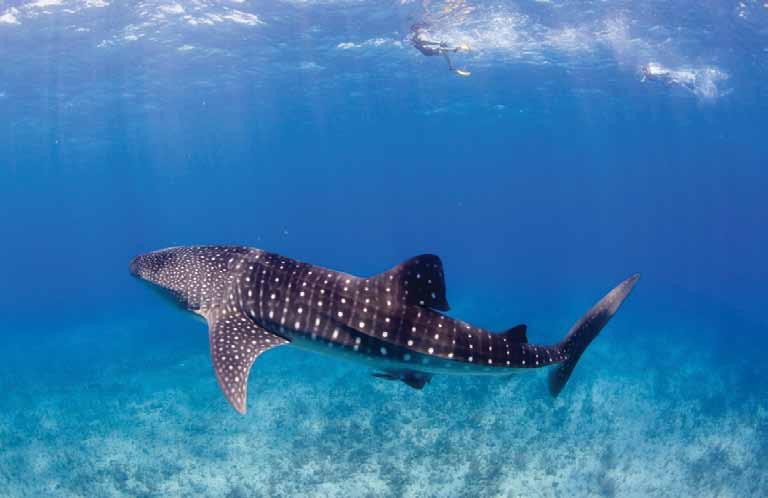
1% for the Planet is a growing global movement of over 1,400 member companies – small and large – in 38 countries that donate at least 1% of sales to environmental organizations. as a 1% non-profit partner, oceana may accept donations from members of the 1% network – a network growing every day. over 2,100 non-profits worldwide are included in the 1% program, and over $50 million has been funneled toward nonprofit partners to date.
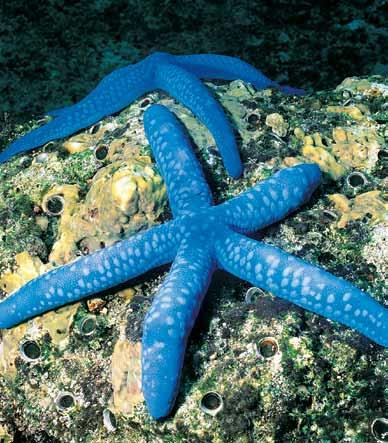
16 | SP r IN g 2013
EarthShare’s payroll contribution program allows donors to direct their contributions to Oceana; to any combination of EarthShare’s members; or to all of them through one general gift to EarthShare! To find out more about how you and your workplace can support Oceana through an EarthShare campaign, please email info@oceana.org or visit EarthShare’s website at earthshare.org.
Born in Geneva, Switzerland, Loic Gouzer was introduced to the oceans at an early age through his father’s family business: oyster farming. An uncle maintains the tradition today in Brittany, France, but the onceflourishing business is now on the verge of bankruptcy, primarily, Gouzer believes, due to rising ocean temperatures, which have encouraged the spread of viruses affecting the oyster immune system.
“Witnessing the progressive decline of my family’s business was my first wake-up call,” he says.
Gouzer has since become an ocean advocate in an unconventional way –through his work in the art world. As senior vice president and international specialist for the Post-War and Contemporary Art Department at Christie’s, in May 2012, Gouzer managed the auction of Yves Klein’s FC 1, one of the most important post-War European works of art. The painting was sold at a record-breaking price of $32.5 million, $1 million of which was donated to Oceana.
He is also an avid diver, and has seen ocean destruction firsthand, including

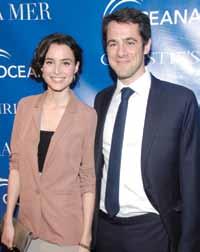
massive coral mortality and the decline of sharks and other large ocean predators. But the ocean issue that troubles Gouzer the most is destructive fishing gear, specifically longlines, which can contain miles of baited hooks that catch anything in their path.
“I’ve seen boats 80 miles out of Montauk pulling out longlines with sharks of all sorts and leatherbacks turtles, all to catch one or two juvenile swordfish,” Gouzer says. “Longlining is completely indiscriminate; it is in my opinion the ecological version of land mining. What takes place on those boats, sheltered from public scrutiny, a couple of miles off our coast, is a disgrace to our planet.”
Gouzer is consistently amazed that so few people know about the crisis in the oceans, and he is dedicated to doing his part to help.
“Although my day job in the art industry has nothing to do with the ocean, I try to use my work and my connections to create awareness to raise funds and change minds,” he says. “I firmly believe that anyone can and should do it at every level.”
OCEANA.O rg | 17 TiTle
Su PP orTer S P oTlighT
“longlining i S com PleTely indi S criminaTe; iT i S in my oPinion The ecological Ver S ion of land mining. WhaT Take S Place on ThoS e B oaTS, S helTered from Pu B lic S cruTiny, a cou Ple of mile S off our coaST, i S a di S grace To our PlaneT.”
© Patrick McMullan
Left: Loan Chabanol and Loic Gouzer attend a screening of artist Yves Klein’s “La Revolution Bleue” for Christie’s presented by La Mer.
eric ripert
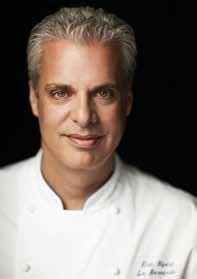
If Le Bernardin is New York’s “Temple of Seafood,” then chef and co-owner Eric Ripert is one of the ocean’s culinary deities.
Le Bernardin has been awarded the maximum three Michelin stars for excellence in cuisine, and has upheld a four-star rating from the New York Times for more than two decades. Ripert learned to cook as a young boy in France, has since earned nearly every cooking accolade there is, and still has spare time for conservation— he recently joined Oceana in calling for increased seafood traceability in the U.S. You can catch Ripert as a guest judge on Bravo’s “Top Chef” and on his own PBS TV series “Avec Eric.”

clams with Spicy Sausage
Warm the oil in a large saucepan over medium heat, warm the olive oil. Add the garlic, onion, curry powder, and lemon zest. Cook for 5 to 10 minutes, stirring occasionally, or until the onions have softened and turned translucent, stirring occasionally, 5 to 10 minutes. Add the andouille sausage and cook for about 2 minutes, or until lightly browned, about 2 minutes. Add the stock and bring to a boil. Add the clams, cover, and cook for about 5 minutes, shaking the pan a few times, until the clams open, about 5 minutes.
Using a slotted spoon, spoon place the clams into shallow serving bowls, discarding any clams that don’t open. Stir the cilantro into the broth and pour the broth over the clams. Serve with lemon wedges.
18 | SP r IN g 2013
1/4 cup extra-virgin olive oil 3 garlic cloves, thinly sliced 1 medium onion, thinly sliced 1 1/2 teaspoons curry powder 1 teaspoon finely grated lemon zest 1/4 pound andouille sausage, thinly sliced 1 cup chicken stock 4 dozen littleneck
scrubbed well 1/4 cup chopped
wedges
chef’S corner Serves
clams,
cilantro Lemon
for serving
4
© Nigel Parry
Oceana found this spotted sea slug off the coast of Chile near the Islotes Pajaros, an area Oceana has proposed as a Marine Protected Area. The expedition revealed the region’s rich biodiversity for the first time.
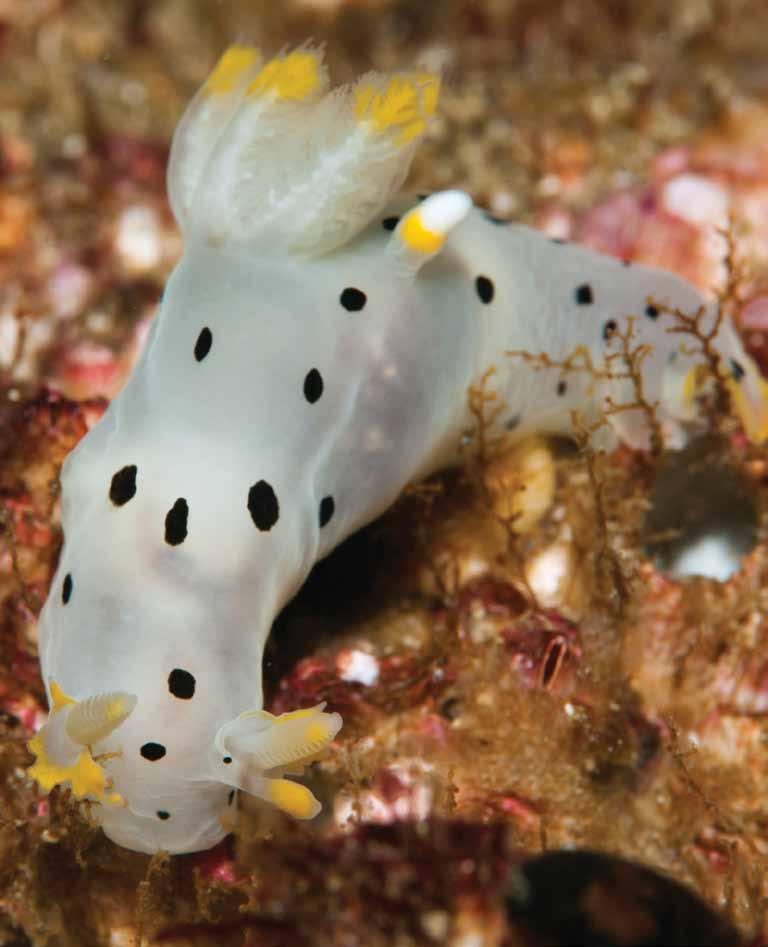
ParTing S hoT
© OCEANA | Eduardo Sorensen
1350 Connecticut Ave. NW, 5th Floor Washington, DC 20036 phone: +1.202.833.3900 toll-free: 1.877.7.OCEANA
Oceana’s accomplishments wouldn’t be possible without the support of its members.
You can help Oceana fight to restore our oceans with your financial contribution. Call us today at 1.877.7.OCEANA, go to our website www.oceana.org/give and click on “give today” or use the envelope provided in this newsletter. You can also invest in the future of our oceans by remembering Oceana in your will. Please contact us to find out how. All contributions to Oceana are tax deductible. Oceana is a 501(c)(3) organization as designated by the Internal revenue Service.
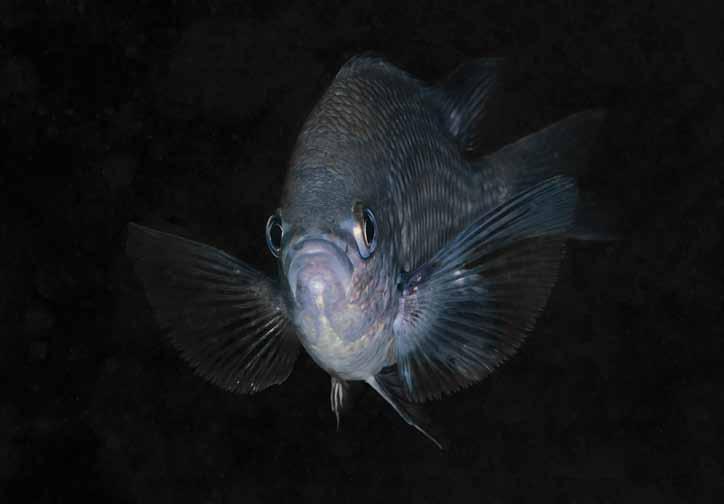
global | Washington, DC europe | Brussels | Madrid | Copenhagen north america | Boston | Ft. Lauderdale | Juneau | Monterey | New York | Portland central america | Belize City South america | Santiago Give today at Oceana.org/give
© OCEANA | Eduardo Sorensen







 Protecting the World’s Oc eans
Protecting the World’s Oc eans






 By e mily f i S her
By e mily f i S her
































